From the March 2015 issue of Apollo. Preview and subscribe here.
Few visitors to ‘Body and Soul’ could fail to be enthralled by the array of German rococo sculpture on display from Bavaria, and Munich in particular. Despite being of exceptional quality, many of these masterpieces will be unfamiliar, because they are normally housed in their original locations in parish churches and chapels. In this exhibition at the Munich Kunsthalle, the works are displayed in spacious rooms in the 20th-century building, which paradoxically succeeds in evoking 18th-century ecclesiastical interiors. The soft pastel colours of the walls enhance and act as a foil to the dramatic figures which have successfully been transported into a museum context.
Until a few years ago some aspects of these artworks might have seemed problematic for a modern audience: their radiant colours, the often anguished emotions, and the frequently intense religious or devotional meanings. But the sculpture produced during this period has become increasingly appealing for contemporary viewers. Perhaps this is because ideas of what statuary should be are no longer characterised by a rigid modernist aesthetic. South German rococo art is not only exceptionally fine, but expresses a lightness of touch, often incorporating literal and metaphorical visual twists. Consequently, although deriving ultimately from French traditions, German examples are distinguished from French or Spanish work of the same era.
This exhibition is the result of a collaboration between the Munich Kunsthalle, where it has been installed, and the town of Freising, a few miles north of Munich, whose diocese is restoring some of its church buildings and fittings. The project was conceived by Roger Diederen, director of the Kunsthalle, and Christoph Kürzeder, director of the Diözesanmuseum in Freising, and thanks to this partnership many important pieces of sculpture from the diocese have been conserved. Exciting discoveries have been made, such as finding the signatures of one of the greatest German sculptors, Ignaz Günther (1725–75), and his polychromist Augustin Joseph Demmel (1724–89) on the back of a Pietà group, along with its date, 1788. Loans from other Bavarian institutions and beyond combine to make this a rich exploration of the subject.
Installed at the entrance to this show is the strikingly tall, slender statue of St Helena by Günther. Dating from 1764/65, the sculpture is made of wood painted white, with details picked out in gilding. Illusionistically carved, she is shown wearing a crown, holding a sceptre in her right hand, and clothed in an ermine cloak, a lace-trimmed dress and jewellery. The saint delicately but confidently supports the True Cross in her left hand. The strength of this piece lies in the figure’s sense of movement and vibrancy, but also in its combination of elegance with spiritual import. Here is a noble and fashionable queen, who wears an almost haughty expression. Yet her stylish trappings do not detract from her status as the Christian heroine who rediscovered the True Cross.
St Helena is one of four figures adorning the altar of the parish church of St Peter and St Paul at Freising. The other three – St Augustine, St Norbert and King David – are also on display. Masterpieces of woodcarving, all are made from wood painted white and highlighted with gold, imitating partly-gilded marble or stucco. The artist wants us to be fully aware of his virtuosity.
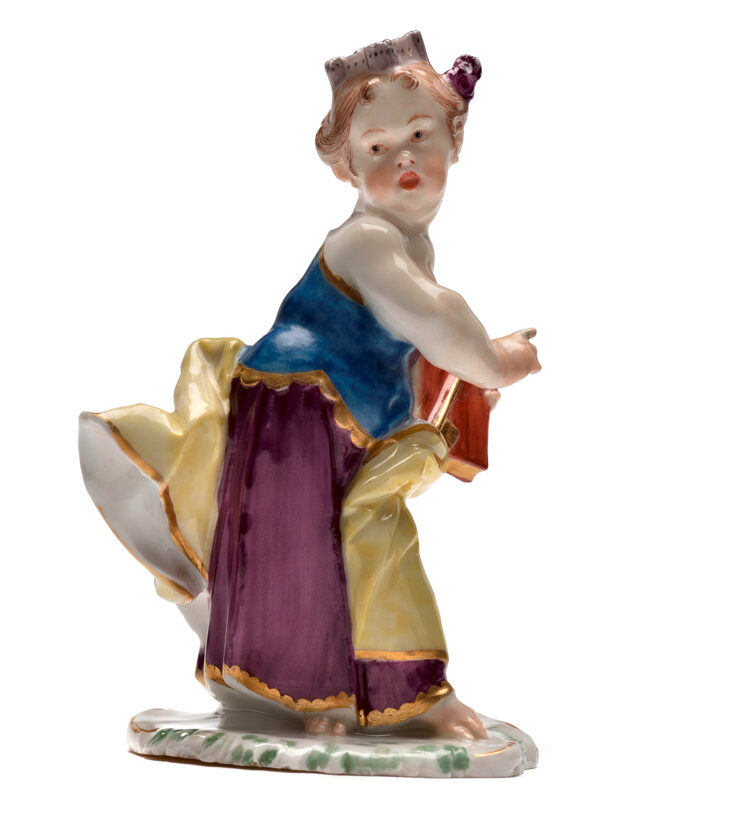
Putto as Cybele (modelled c. 1755–57; fired c. 1760), Franz Anton Bustelli. Photo: Jens Bruchhaus; © Diözesanmuseum Freising
The period covered in this exhibition begins with the three prolific Asam brothers – Cosmas Damian, Egid Quirin and Philipp Emanuel – who were active as painters, sculptors and architects in Munich in the first half of the 18th century. As well as Günther, the sculptor Johann Baptist Straub (1704–84) and his workshop are well represented by numerous wood figures and reliefs. Drawings and prints by or after the seminal Belgian-born architect and designer François Cuvilliés (1695–1768), who arguably brought the rococo to Bavaria, are shown, as well as the highly sculptural Nymphenburg ceramics produced by Franz Anton Bustelli (1723–63), and a range of goldsmiths’ work. Along with sculptures by Joseph Götsch (1728–93) and Christian Jorhan the Elder (1727–1804) this range of artworks reveals the wealth of creativity during the period. The show concludes with a group of terracottas and other work by Roman Anton Boos (1733–1810), which is said to characterise the end of the rococo. His output does indeed seem tame in comparison with the pieces which have gone before; his more controlled style, a herald of the neoclassical, serves to highlight the compelling power of the earlier rococo masters.
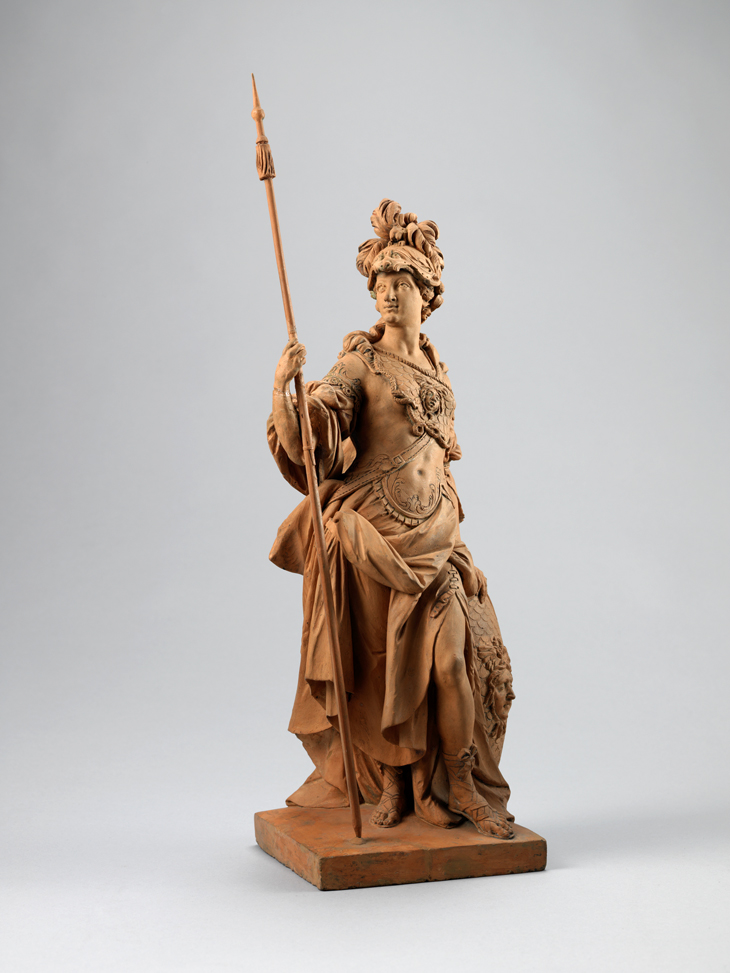
Minerva (1776), Roman Anton Boos. Germanisches Nationalmuseum, Nuremberg
The liveliness and wit of the rococo wood figure is illustrated by many of the exhibits: a chubby putto playfully trying on a cardinal’s hat accompanying Günther’s figure of St Peter Damian for example, or the same sculptor’s graceful figures of St Notburga and St Isidore in their contemporary folk costumes and accoutrements. But the work of rococo artists, far from being merely frothy, is capable of suggesting solemnity. Straub’s terracotta bust of a woman, an Allegory of Faith (1775), was a model for part of the funerary monument to his second wife; it may in fact be a portrait of her, and certainly seems to be based on a study from life. While the surfaces of the wood, ceramic and silver gilt figures in this show appear to contrast with this unassuming terracotta, its handling epitomises the sculptural accomplishment of the movement, and the wider sophistication of German rococo. Like the other terracotta models and drawings displayed, Straub’s work also demonstrates the process of its own creation.
The accompanying catalogue (in German) comprises enlightening entries on all the exhibits, as well as a series of searching scholarly essays, a full bibliography, and a useful appendix with summary biographies of the major artists. Taken specially for the catalogue, the excellent photographs showing the sculptures in situ within the church interiors, illustrate what the exhibition can only imply (although impressive digital interactives in the exhibition spaces take the visitor on useful virtual tours of some of the churches). The publication will thus remain a core reference work for the subject, complementing the magnificence of the works of art displayed in this thoughtful and visually stimulating exhibition.
‘Body and Soul: Munich Rococo from Asam to Günther’ is at the Kunsthalle der Hypo-Kulturstiftung, Munich from 12 December 2014–12 April.
Unlimited access from just $16 every 3 months
Subscribe to get unlimited and exclusive access to the top art stories, interviews and exhibition reviews.


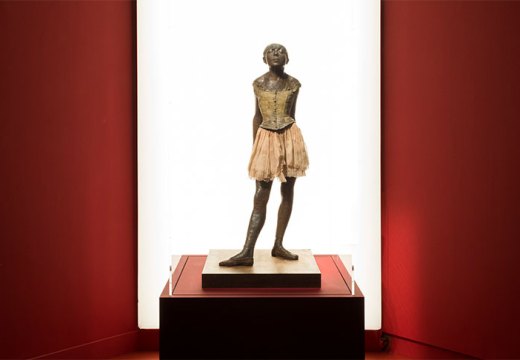
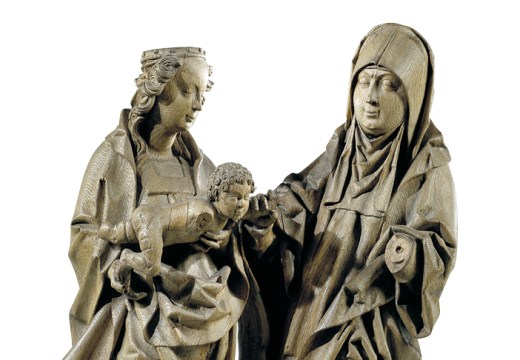
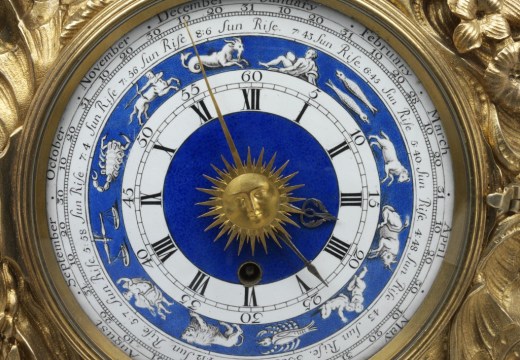









![Masterpiece [Re]discovery 2022. Photo: Ben Fisher Photography, courtesy of Masterpiece London](http://www.apollo-magazine.com/wp-content/uploads/2022/07/MPL2022_4263.jpg)
It’s time for the government of London to return to its rightful home